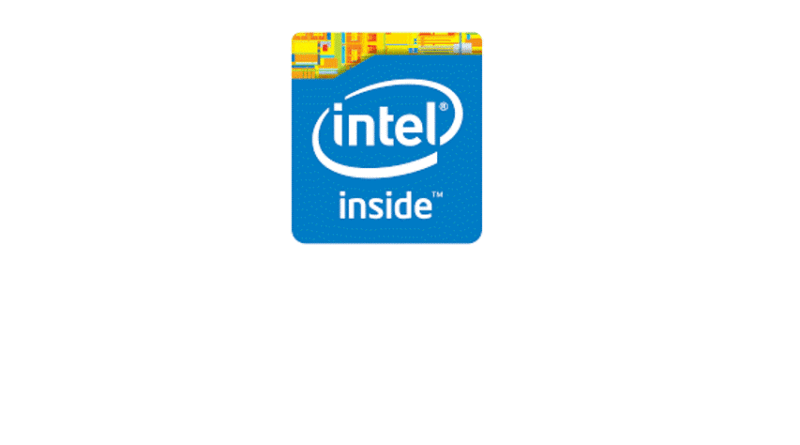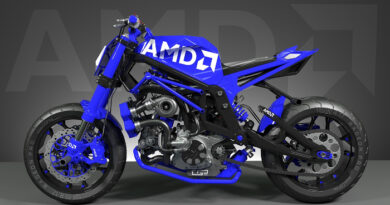Titan Fall(ter): Intel’s Stumble an Analysis
Intel, is a household name, in fact, every corporate employee has used a laptop at least once with the Intel Inside Logo, once the undisputed king of the semiconductor industry with a large market share both in the consumer and server market, it is now not only posting results in red, its guidance is in negative too and is now in the process of firing ~15000 employees and as what CEO has said, future is even more difficult. How did this behemoth come to this, was it a strategic misstep? increased competition? the Nokia syndrome? or the combination of all? This article explores all this with my insight from over 2 decades of following Intel.
History
Founded in 1968 by Gordon Moore and Robert Noyce, Intel (from integrated electronics) pioneered the semiconductor industry. Initially producing memory chips, the company’s landmark achievement came in 1971 with the world’s first microprocessor (4004), which gave birth to 80186 and the famous 80386 which catapulted Intel as the “personal computer” of choice and the x86 architecture remains the dominant processor of choice when it comes to personal computing or server. In fact the “Moore’s law” is something people still keep as a target when it comes to semiconductor products.
Strategic Misstep
- Ignoring the GPU market – Intel had tried multiple times to enter the very competitive market of dGPU now mostly dominated by Nvidia and AMD. Their initial effort with i740 wasn’t met with much enthusiasm and later intel focused on its efforts for integrated chipset-based GPU. The most famous are i810 and i845. Little did they know that these GPUs when converted to GPGPU (general purpose processing on GPU) would turn out to be a powerhouse when it comes to parallel processing. Intel also tried its famous Larrabee GPU which was the usage of small x86 cores as GPU. This project got massively delayed, never got the expected performance and was abandoned. This is probably a major mistake by Intel as GPUs have now become the dominant processors for servers and AI.
Their latest effort with Arc GPU by recruiting veterans like Jim Keller and Raja Koduri has also seemed to flop out and Intel probably no longer has the infinite resources to throw at. AMD on the other hand did the right thing by acquiring ATI (it faced a huge backlash at that time) but in the end, it is paying off.
- The 64-Bit Computing: Intel pioneered the 32-bit market, sure there was no need for 64-bit computing but they faltered twice in this regard. They initiated a 64-bit CPU which was way different from their x86 CPU that it never became a mass market product except for a few server markets with its Itaniuim CPUs. AMD beat it to the punch by converting x86 to 64-bit and being fully backwards compatible and thus it became the most common-use system that even Intel had to acknowledge and adapt.
- Stagnating performance: The biggest mistake on Intel’s side was sitting on its laurels and stagnating performance which let the competitors catch up. Intel Dominated till its Pentium 3 CPUs but AMD suddenly upped the ante with its Athlon and Opteron CPUs which were cheaper and better. However, intel with its Core branded CPU knocked the wind out of AMD which could not catch up for several years. However, in these times, where Nvidia was upping the game with each generation, Intel was sitting on its laurels for several generations. The result was not only did AMD suddenly catch up, the mobile CPUs started breathing down the neck of Intel. which brings us to the next topic
- Rise of competition: Intel underestimated the competition. Not only they have lost the performance and efficiency crown to its x86 rival AMD, ARM and GPUs have become its competition too. Intel was always focused on its core market which is CPU on the personal computer and server market. Intel however tried its hand with ARM CPUs but gave up and sold it. The mobile market suddenly saw a huge boom and ARM picked it up with its efficiency. Intel when realising this tried again but the mobile market is more of a SOC (system on chip) driven rather than just CPU. Intel also needed modem, GPU etc as technology to compete in the mobile space and efficiency was also something not on Intel’s side. Intel fully exited its mobile strategy by even selling the modem market which is dominated by Qualcomm (and its patent). Next came Nvidia which didn’t have any CPU so they had to push for general-purpose processing on GPU and make a super ecosystem with CUDA. Intel again didn’t have any response to this and now seems to be doing too little too late with the rise of AI.
- AI Galore: Out of all the major silicon vendors, Nvidia has now become the most valued company all thats to their recognition of artificial intelligence early on and building a whole ecosystem around it. Intel now not only struggling with hardware to compete, they lack the ecosystem or let’s say unable to break the monopoly of the ecosystem set by Nvidia. This could have been the market of Intel but they dropped the ball hard.
- Manufacturing woes and chip vulnerability: AMD, ARM, and Nvidia all have one thing in common, they don’t produce their own chip but only design them. They outsource all their manufacturing to the likes of TSMC or Samsung. These Taiwanese and South Korean chipmakers, respectively, have mastered advanced chip manufacturing processes, often outpacing Intel in terms of node size and production efficiency. Thus it’s a huge Capex and R&D burden on Intel to develop and manufacture their own chip. Intel has encountered difficulties in transitioning to smaller manufacturing nodes, leading to product delays and performance setbacks. Also, their chips have faltered with lots of vulnerabilities giving a bad name to Intel’s quality and the latest being their 13th and 14th gen CPUs frying at a rapid pace resulting in a class action lawsuit.
What could have been different for Intel?
- Diversification: Intel tried multiple times to diversify its business but every time it gave up, be it GPUs, 64-bit CPUs, Mobile initiatives, 5G Modem etc. Relying on a few eggs in the basket is a road to disaster. Intel should have tried to open up to new markets so that if one business fails, the other can pick up.
- Advancement and Not Stagnating: Intel had the chance to outright kill the competition with constant innovation and performance improvement. Instead, they chose to make minimum effort as they were the market leader. Nvidia does the complete opposite, competition or no competition, they always have innovation on the edge.
- Taking Competition Seriously: Intel should consider ARM and AMD as their major competitors early on and work on their product lineup. In fact they are in the business of chip manufacturing and TSMC ran past them. Early detection and response was key
Is this the end of the road?
In the world of technology and what AMD has already proven, anyone can come out from the brink of extinction given they have sufficient innovation and price.
Intel is right now taking the right step by scaling down. Yes, the Titan is shrinking by firing Manpower and shutting down all the non-core business activities. but this is the need of the hour.
Cost reduction in a giant like Intel is very necessary. Intel must go back to the drawing board, recognise its competition’s edge, regroup and come out with products which are innovative and competitive. This is a good time for Intel should think of new architecture like RISC V to reenter the mobile market. Or they can license ARM too. Their AI focus and packaging innovation should be on point and if they can give up on chip manufacturing to just be a licensed vendor, they should think it through too. Intel desperately needs to gain its customer’s trust
Intel is not going anywhere, not by a long shot.
- Titan Fall(ter): Intel’s Stumble an Analysis - August 5, 2024
- AMDs Radeon Future Looks Bleak After RDNA 5 - May 1, 2024
- Kinect 2- Right time to use A.I. in Nextgen Consoles? - April 30, 2024





